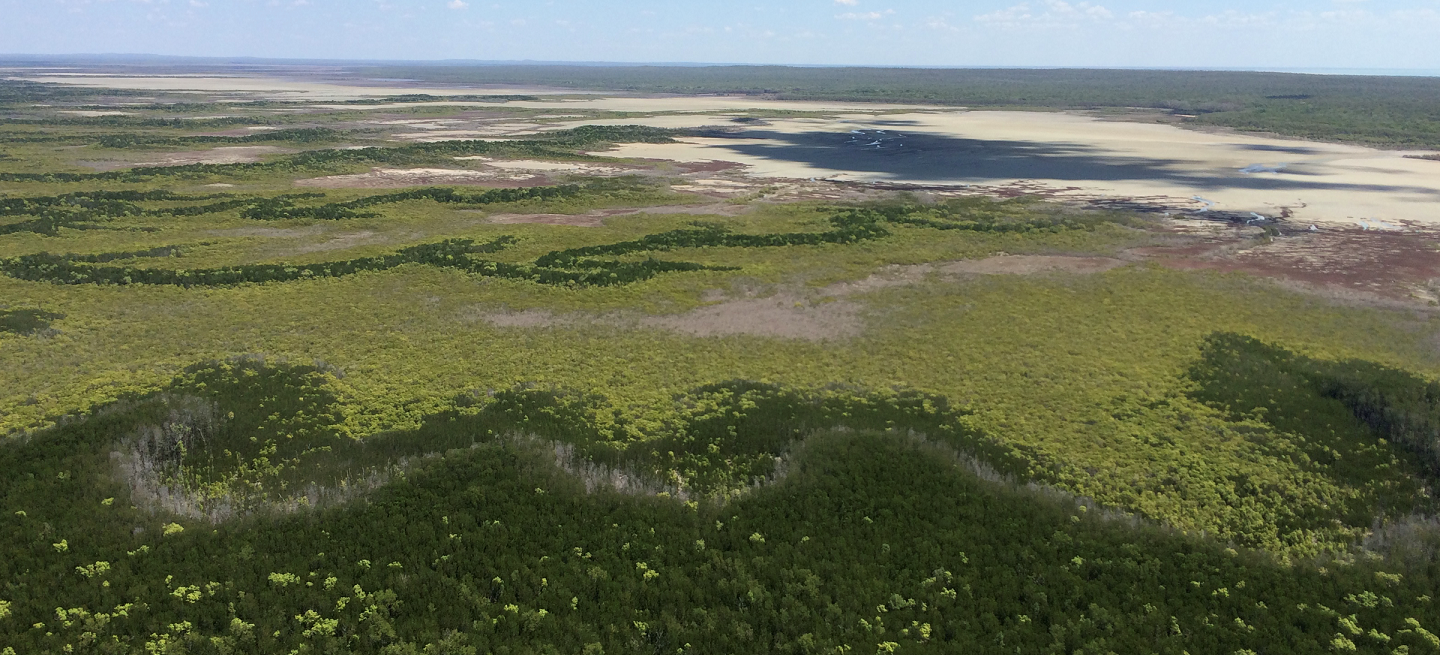New platform helps protect and restore threatened mangroves

An aerial view of mangrove coverage in northern Australia.
28 July 2020
A new interactive tool to help conserve and restore the world’s mangrove forests has been launched by a team of international scientists including Aberystwyth University.
Global Mangrove Watch is an online platform for mapping and monitoring mangroves, which have been an important habitat for nature and people for centuries.
Launched on Monday 27 July 2020 as part of a week of events to mark World Mangrove Day, the platform has been developed by the Global Mangrove Alliance - a collaboration of organisations working towards an increase of 20% in the world’s mangrove cover by 2030.
It provides remote sensing data and tools for monitoring mangroves, giving universal access to near real-time information on where and what changes there are to mangroves across the world as well as highlighting why they are valuable.
Thriving mangroves are key to the health of nature and effective climate action but between 1996-2016, their coverage has shrunk by more than 6,000 km².
These salt-tolerant, forested wetlands are found in the coastal zones of more than 118 countries in the tropics, subtropics and temperate regions, where they provide an important habitat for thousands of flora and fauna species and numerous resources for local populations, including food and timber.
They also help protect coasts from storm damages and store significant amounts of carbon.
Professor Richard Lucas, who holds a Sêr Cymru Research Chair within the Earth Observation and Ecosystem Dynamics (EOED) Research Group (RG) at Aberystwyth University’s Department of Geography and Earth Sciences (DGES), said: “The Global Mangrove Watch has been an ambition for over a decade and resulted from an ongoing collaboration with the Japan Aerospace Exploration Agency through their Kyoto and Carbon Initiative and support from Wetlands International. The Earth Observation and Ecosystem Dynamics (EOED) group at Aberystwyth University and soloEO in Japan have played a pivotal role in developing and implementing the mapping and change detecting using combinations of radar and optical satellite data acquired over three decades, commencing in the 1990s. We hope that the platform informs people at the local level but also globally as to the current and past states of mangroves and, more importantly, contributes to their long-term conservation and sustainable use.”
Dr Pete Bunting is a Reader in Remote Sensing at Aberystwyth’s Department of Geography and Earth Sciences said: “Using remote sensing and other data, we can provide accurate, up-to-date information on mangrove extent and changes to that extent to coastal and park managers, conservationists, policymakers and practitioners. This information can help them pinpoint the causes of local mangrove loss and track restoration progress as well as respond to threats such as illegal logging. The Global Mangrove Watch platform will also help ensure that mangroves are central to climate mitigation, adaptation and sustainable development plans and policies.”
Collaborators on the Global Mangrove Watch project include Aberystwyth University, soloEO, NASA, JAXA, UNEP-WCMC and other partners, with support from the Oak Foundation, DOB Ecology and the Dutch Postcode Lottery, The Nature Conservancy and Wetlands International.
